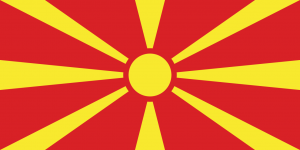Difference between revisions of "Language/Macedonian/Grammar/Plurals"
m (Quick edit) |
m (Quick edit) |
||
| Line 61: | Line 61: | ||
<br><hr>If you have any questions, please ask them in the comments section below.<br>Feel free to edit this wiki page if you think it can be improved. 😎 | <br><hr>If you have any questions, please ask them in the comments section below.<br>Feel free to edit this wiki page if you think it can be improved. 😎 | ||
==Related Lessons== | |||
* [[Language/Macedonian/Grammar/Feminine|Feminine]] | |||
* [[Language/Macedonian/Grammar/Conditional-Mood|Conditional Mood]] | |||
* [[Language/Macedonian/Grammar/Gender|Gender]] | |||
* [[Language/Macedonian/Grammar/Negation|Negation]] | |||
* [[Language/Macedonian/Grammar/Adverbs|Adverbs]] | |||
* [[Language/Macedonian/Grammar/Nouns|Nouns]] | |||
* [[Language/Macedonian/Grammar/Pronouns|Pronouns]] | |||
* [[Language/Macedonian/Grammar/Future-Tense|Future Tense]] | |||
* [[Language/Macedonian/Grammar/Articles|Articles]] | |||
* [[Language/Macedonian/Grammar/Questions|Questions]] | |||
{{Macedonian-Page-Bottom}} | {{Macedonian-Page-Bottom}} | ||
Revision as of 22:53, 25 February 2023
Welcome to the Polyglot Club's lesson on Macedonian grammar - plurals! In this lesson, we will be discussing the rules for forming plurals in Macedonian. We will also look at some examples of how these rules are applied in practice.
Overview
Macedonian is a Slavic language spoken by about 2 million people in the Republic of Macedonia and its neighboring countries. It has a rich and complex grammar system, and one of the most important aspects of this system is the formation of plurals.
In Macedonian, there are two main ways to form plurals: by adding a suffix to the end of the word, or by changing the stem of the word. We will look at both of these methods in more detail below.
Suffixes
The most common way to form plurals in Macedonian is by adding a suffix to the end of the word. The suffixes used depend on the gender of the noun, as well as its ending.
For masculine nouns, the suffixes used are -и (singular) and -ите (plural). For example, the word друг (friend) becomes други (friends) in the plural.
For feminine nouns, the suffixes used are -а (singular) and -и (plural). For example, the word пријателка (female friend) becomes пријателки (female friends) in the plural.
For neuter nouns, the suffixes used are -о (singular) and -а (plural). For example, the word моме (mother) becomes момиња (mothers) in the plural.
Stem Changes
Another way to form plurals in Macedonian is by changing the stem of the word. This is done by adding a consonant to the beginning of the word, or by changing the vowel in the middle of the word.
For example, the word дете (child) becomes деца (children) in the plural. Here, the stem of the word has been changed from дет- to дец-.
Similarly, the word куќа (house) becomes куќи (houses) in the plural. Here, the stem of the word has been changed from куќ- to куќи-.
Examples
Let's look at some examples of how these rules are applied in practice.
Masculine Nouns
- друг (friend) → други (friends)
- син (son) → синови (sons)
- брат (brother) → браќа (brothers)
Feminine Nouns
- пријателка (female friend) → пријателки (female friends)
- сестра (sister) → сестри (sisters)
- мајка (mother) → мајки (mothers)
Neuter Nouns
- моме (mother) → момиња (mothers)
- дете (child) → деца (children)
- куќа (house) → куќи (houses)
Conclusion
In this lesson, we have looked at the rules for forming plurals in Macedonian. We have seen that there are two main ways to form plurals: by adding a suffix to the end of the word, or by changing the stem of the word.
If you want to learn more about Macedonian grammar, you can find native Macedonian speakers on the Polyglot Club website and ask them any questions.
If you have any questions, please ask them in the comments section below.
Feel free to edit this wiki page if you think it can be improved. 😎
Related Lessons
